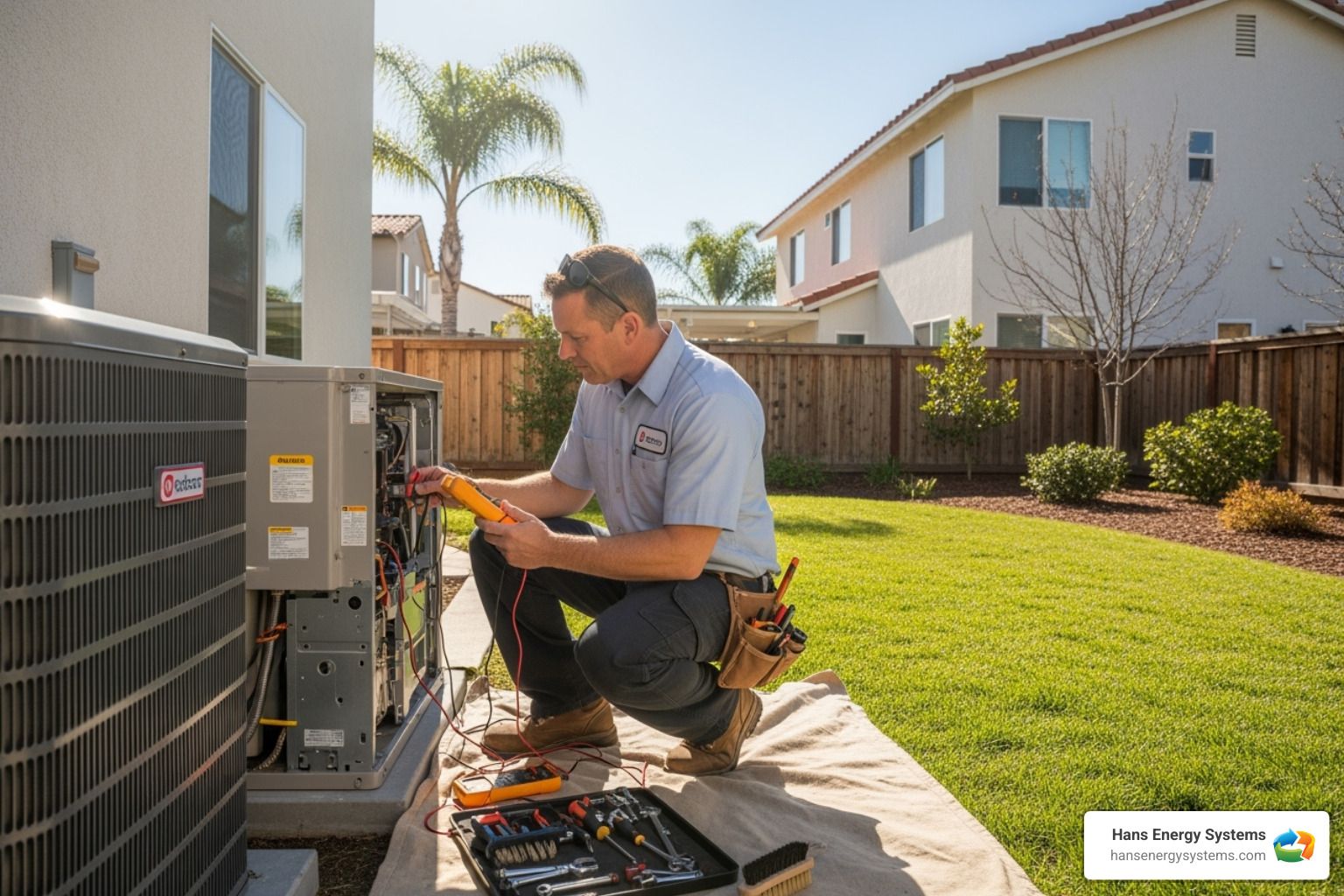More homeowners in Poway are turning to solar generators as a backup energy source for power outages, off-grid living, or long-term efficiency. The idea of being able to keep your appliances running during blackouts while using clean energy makes solar generators especially appealing. But choosing the right size is one of the most common challenges people face. Go too small, and you may lose power when you need it most. Go too big, and you could end up paying for unused capacity.
Getting the size right is not just about finding a number on a label. It means making sure your generator supports your actual household needs. That involves thinking about which parts of your home rely most on power, how those needs shift throughout the year, and whether you use energy differently during certain times of day. Before investing in a system, homeowners in Poway need a plan that matches output to use so nothing goes to waste and nothing falls short.
Understanding Your Home’s Energy Requirements
Everything starts with knowing how much energy your home really uses. Though energy bills can give you a general idea, they usually average out over weeks or months. What’s more helpful is having a clear sense of your actual peak energy demands—when the power load is at its highest during the day. That’s the type of strain your solar generator needs to be able to handle.
Key things that affect household energy use include:
– Number of people living in the home: More residents usually means more energy used for lighting, electronics, laundry, and cooking.
– Appliances and systems: Items like refrigerators, washers, water heaters, and HVAC systems account for the biggest slices of energy usage.
– Daily routines: Do most of your devices run at the same time in the evening? Do you charge electric vehicles or run a guest house on the same meter?
Peak usage plays a big role. For example, if your household uses a microwave, dishwasher, and washing machine all at once while the AC is running, your energy draw will spike sharply—much higher than the usual average on your power bill. That’s called peak load, and it’s what your system must be able to support without failing.
The better you understand these usage patterns, the easier it becomes to choose the right-size generator. Taking the time to review your energy demands—by hour, by appliance, and by season—gives a more accurate picture of your needs than looking at yearly consumption totals.
Types of Solar Generators and How They Match Residential Needs
Once you have an idea of your energy needs, the next step is figuring out which size generator fits best. Solar generators are typically categorized by their energy storage and output capacity, usually labeled in watt-hours (Wh) or kilowatt-hours (kWh). These can be broken down into three main types:
1. Small Solar Generators (Up to 1,000 Wh)
– Best for: Emergency backup for phones, small electronics, or lights
– Pros: Portable, easy to store, fast to charge
– Cons: Will not power appliances or large systems
2. Medium Solar Generators (1,000–3,000 Wh)
– Best for: Running a few essential items like a fridge, modem, phone chargers, or medical equipment
– Pros: Balance between portability and capability
– Cons: Limited run time if multiple devices are connected
3. Large Solar Generators (Over 3,000 Wh)
– Best for: Whole-home backup or long-term off-grid living
– Pros: Can handle major appliances and HVAC systems
– Cons: Higher upfront cost and often requires professional installation
For example, a two-bedroom home with a family of four might struggle with a medium generator if the goal is to keep the fridge, internet, lighting, and air conditioning running through the night. In that case, a large-capacity system would be a better fit.
Every homeowner’s energy profile is different, so the key is choosing a system that meets your highest energy demand, not just your average. That way, if an unexpected outage happens or you add more appliances later, your system will still hold up.
Key Factors to Consider When Sizing Your System
Sizing your solar panel generator for your home in Poway does not stop at knowing your energy use. There are technical components that impact how well your system performs and whether it can handle your needs today and years into the future. These include battery storage, inverter size, potential for energy expansion, and the conditions around your home.
Here are factors homeowners should pay close attention to:
– Battery Capacity: The battery needs to store enough energy to cover your usage beyond daylight hours. If the battery fills up but your system continues collecting power, the extra energy is wasted unless it can be stored or used elsewhere.
– Inverter Size: The inverter converts solar energy into usable electricity. If it is undersized, your generator will not deliver the output your appliances need, even if your battery has enough energy stored.
– Long-Term Planning: Think about possible life changes. If your household might grow, if you plan to buy an electric vehicle, or if you will be adding more appliances, your energy needs will increase. Choosing a slightly larger system now can prevent an upgrade later.
– Environmental Conditions: Placement of the panels, shading from trees or buildings, and even cloudy days can affect how much your system produces. Homes in valleys or under tall landscaping often deal with partial shading throughout the day. These factors can lower your generator’s charging speed if not accounted for during planning.
All of these details affect the efficiency and reliability of your solar panel generator. Even with the correct capacity, ignoring inverter size or underestimating shade coverage can affect how long your generator lasts during an outage or how well it operates during peak demand.
Why a Professional Assessment Makes a Difference
A walkthrough by our technicians before installation helps prevent common oversights. Without the right evaluation, it is easy to guess wrong on what size works or skip important details. A professional energy audit helps show what is really happening with energy use in your home. It also allows the setup to match real living patterns, not just what is shown on a utility bill.
During this visit, our technicians look at power habits, appliance loads, and future changes. They also check the structure to see how solar equipment should be placed, including available roof space and how well it connects with the path of the sun. This process keeps you from overspending and also protects against underperformance.
Another benefit of professional installation is reducing the chance of faults or early wear. Wiring, breaker connections, and load balancing require training and proper tools. A setup error could shorten the generator’s life or create safety risks when high energy loads occur.
Having your system assessed, sized, and installed by professionals who know how solar works across different homes in Poway ensures steady, safe performance year after year.
Maintenance and Long-Term Value of a Solar Panel Generator
Installation is the beginning. Keeping your solar panel generator working well over time means doing some basic upkeep and staying aware of changes in how your home uses power. Dirt, fallen leaves, animal interference, and daily wear can affect output if not managed.
Here are ways homeowners keep their systems operating efficiently:
– Schedule yearly inspections with our professionals to check equipment and fix small problems early.
– Keep solar panels clear of dust and grime to improve sunlight collection.
– Watch the system’s energy output to catch drops in performance before they grow larger.
– Revisit energy habits if you add appliances or start spending more time at home.
– Have our technicians check battery condition over time. Strong battery storage is critical during longer periods without sun or during multiple cloudy days.
Most solar panel generators are engineered to last, but that depends on regular checkups to manage wear from outdoor exposure. Batteries may need replacement after years of use, and panels can shift or loosen during strong winds or earthquakes. Letting our professionals handle regular inspections keeps that maintenance on track and removes the guesswork.
Right Solar Generator for Poway Homes
Choosing the right size solar panel generator comes down to understanding your home’s energy use and selecting a system that meets those needs. Getting the size wrong may leave you without power when it matters or put you into a system much larger than necessary. Looking at your energy habits, especially during high-use periods, can make the right size clear.
Planning your system with support from our technicians ensures your generator delivers what your home needs and runs efficiently for many years. It also helps protect your investment by reducing wasted energy and making future maintenance easier. For homeowners in Poway, a solar generator sized to your actual needs brings security during outages and steady performance no matter the season. With the right system in place, you can depend on consistent power every day and night.
If you are ready to ensure your home stays powered through outages and changing energy demands, see how a properly sized solar panel generator in Poway can support your appliances efficiently while avoiding unnecessary costs. Hans Energy Systems recommends having your setup evaluated by our professionals to help you plan confidently for future growth. For a quick estimate or to book a service visit, please contact us today.





